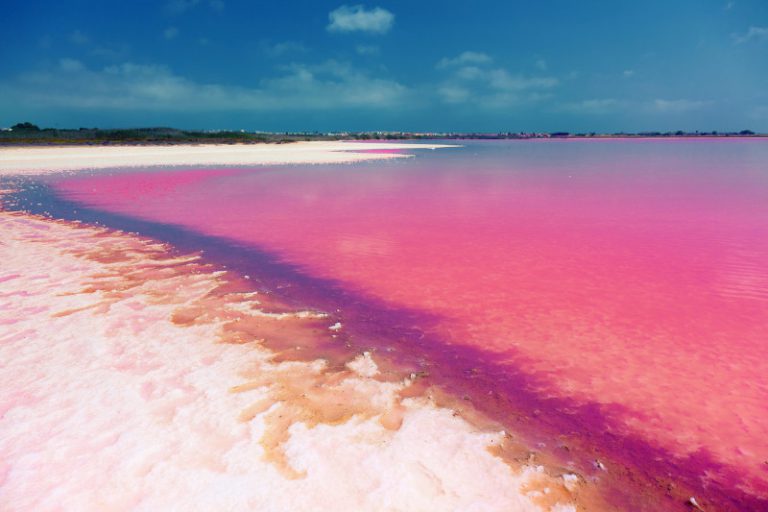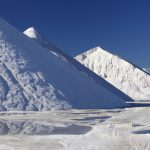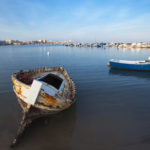Last updated on February 19th, 2020 at 01:28 am.
Most people think of Torrevieja as primarily being a seaside resort. It’s not a package holiday destination as such but, with its prime location on the shores of the Mediterranean, it’s a popular holiday destination for Northern Europeans and Spanish alike. Although this swells business during the spring and summer season, it leaves the town quiet during off-peak autumn and winter.
Not only does tourism tend to be seasonal, but employment is too. This makes it difficult for those young people growing up here to find work all-year round. An issue that the town council are well aware of and are trying to address through widening the appeal of Torrevieja in autumn and winter too.
Councillor Fanny Serrano is responsible for tourism in the town; ‘Half of Torrevieja is in fact taken up by natural parks and lakes which many people know very little about.’ Councillor Serrano has been visiting tourist fairs in different parts of the country and has made links with the city of Cartagena to ensure an exchange of visitors between the two towns.
A group has also been established which links together towns across the Vega Baja. This includes Guardamar, Rojales, Pilar de la Horadada, Rafal as well as Torrevieja. As part of this group Torrevieja is keen to publicise its vineyards and the wine produced in La Mata. It is hoped that between them, these towns can create their own distinct brand which will encourage visitors throughout the year.
And there is plenty to see.
Natural parks and lakes
Not everyone is aware that Torrevieja is also home to some of the most astounding natural scenery you can imagine. It has two natural lakes and an extensive natural park that can transport you from the busy seaside town into a countryside setting within a matter of minutes.
The park consists of two lakes or lagunas separated by the area El Chaparral. The Salinas de Torrevieja is a large shallow lake that is characterised by a pinky hue. This is caused by the microorganisms that live in it. The water of the lake has a high salt content and the mud beneath it is considered to be good for the skin. You can sometimes see people caking themselves in the mud and then bathing it off in the salt water.
It presents amazing scenery, particularly at sunset and it’s worth a visit just to walk along this lunar landscape. Don’t take your shoes off though or come on your bike (unless you hose it down well afterwards). All around the edges of the lake there is a hard crust of salt which does not make for a barefoot stroll.
The Salinas de Torrevieja is connected to the sea by an artificially dug channel known as Acequión. This was created in the 14th century as part of the salt production industry in the town. You can see the salt mountains between the salt lake and the town centre following the Via Verde bike path. This was originally the route that the salt train took down to the coast.
On the other side of the road begins the Laguna de la Mata. The salt content of this water is not as high as that of its sister lake and the surrounding vegetation and wildlife are evidence of this. It is a beautiful natural lake and the surrounding park is favoured by families during the summer. There are picnic areas and the pine trees make the perfect natural break from the sun throughout the year.
If you would like to find out more about the natural lakes and parks you should also take time to visit its reception centre. Here you can see displays and some interactive pieces that give you insight into the natural balance and biodiversity that exists here. They also arrange tours in different languages, particularly during the spring and summer months. It’s worth checking if there is one coming up when you are in the town. If you are interested you might register at the Tourist Information Centre on the Paseo Vista Alegre.
The talks follow a number of different themes. For example, in February there was a guided walk around the park to celebrate World Wetlands Day. Other topics include the birds of the natural park, the vineyards and the salt marches and are usually conducted in both Spanish and English but can be organised in other languages if necessary. At the height of the summer there are guided walks in the evening when participants are encouraged to enjoy the beauty of the lagoon at sunset.
This year is the 20th anniversary of the The Parque Natural de La Mata-Torrevieja and you can see pictures and find out more information (in Spanish) on their website
Sports resort
During the boom years, Torrevieja benefited from the construction of a number of large and impressive buildings and sports fields that now constitute a Sports City. Local people and children benefit from the provision of a large sports centre, indoor and outdoor swimming pool and sports fields and pitches. It’s true that there have been some construction problems that mean the swimming pool is currently closed for repair. However, overall, Torrevieja is lucky to have these facilities.
Now councillors in Torrevieja want to make better use of the resources available, not only for the town’s own residents but also to attract elite sports teams from other countries to train here. The attraction is easy to see for Northern European countries. The weather. During winter months the teams and their coaches can make a short flight and be able to train in the relatively mild climate here on the Costa Blanca. The temperatures in Torrevieja average more than 15 to 20 degrees higher than that of many other European countries.
In just two years more than 16,000 athletes from different European countries have visited Torrevieja with the purpose of using its sports facilities. Torrevieja has also begun to feature as a place to host international sporting events. For example, Torrevieja hosted the ninth stage of the Tour of Spain cycling competition.
It’s not just the town’s running tracks that bring sportsmen and women here. Torrevieja has an enviable spot on the Mediterranean coast and offers a whole range of water sports too. Of course, there are the usual banana boats, peddloes and jet skis but there is plenty of opportunity for those with a more serious interest in making the most of the sea.
Sub aqua and scuba diving, water skiing, padel surfing, flyboarding, jet boarding and surfing can all, be practised here. There are a number of water sport schools that offer courses and opportunities both for those who are starting out as well as those who are experienced or even professionals. If you are lucky enough to have your own boat there are several marinas to choose from, each with their own facilities, bars and restaurants.
Beach holiday? Think again
Of course, for the majority of visitors to Torrevieja it’s the beach, the sun and the laid back atmosphere of its paseos that draws people to the town. However, whilst here it is worthwhile considering what else is on offer.
It can easily be forgotten that Torrevieja is, essentially, a Spanish town and although it welcomes many international residents and tourists, it celebrates the Spanish fiestas and has Spanish lifestyle at its core.
Perhaps the best way to find out more about what is available is to visit its Tourist Information Centre on Paseo Vista Alegre. It is open between 9am and 7pm on weekdays and 10am until 2pm on Saturday. The centre is closed on Sundays. You can also call on 965 70 34 33 or email torrevieja@touristinfo.net
Make the most of this wonderful, diverse and vibrant town.
No comments yet
There are no comments on this post yet.






Leave a comment